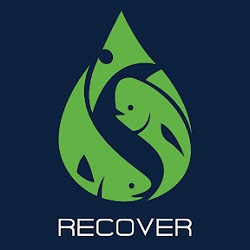 These short video clips depict the the diverse research methods that researchers use to examine how oil affects ecologically and economically important fish species.
These short video clips depict the the diverse research methods that researchers use to examine how oil affects ecologically and economically important fish species.
Broodstock Capture (1:34)
This clip takes viewers aboard the University of Miami Rosenstiel School’s Yellowfin boat for a mahi mahi broodstock capture trip in the Florida Straits. All mahi mahi that are captured are brought to the University of Miami Experimental Hatchery. Wild-caught broodstock typically begin spawning regularly after an acclimation period of around two weeks, and their offspring are raised to various life stages (larval, juvenile, adult) for researchers to use in experiments examining how the Deepwater Horizon oil spill affected mahi mahi.
Broodstock Transfer (0:51)
This video depicts how RECOVER scientists safely and efficiently move wild-caught mahi mahi from the acclimation tanks to their permanent home in the spawning and maturation tanks. RECOVER scientists’ research requires facilities like the Hatchery that allow them to do this successfully. Once transferred to these tanks, the male and female mahi mahi broodstock begin to spawn regularly.
Creating Oil Dilutions (0:57)
This video provides a behind-the-scenes look into how RECOVER scientists create the oil dilutions used to study the impacts of crude oil on mahi mahi and red drum in the lab. RECOVER scientist Dr. Christina Pasparakis explains that oil dilutions are created in seawater using oil sampled from the 2010 Deepwater Horizon oil spill, so that their research can parallel conditions present during the spill.
Zebrafish Fluorescence (0:55)
This video features RECOVER researcher Yadong Wang, who exposes zebrafish (a model organism for scientific research) to green and red flourscence proteins. When hit with light, the proteins fluoresce or emit a red and green light from their red blood cells and blood vessels, respectively. RECOVER researchers use this technique to observe vessel development in fish and hope to use this method in the future to study how oil impacts blood vessel formation in mahi mahi and red drum.
